South India's Best Temples
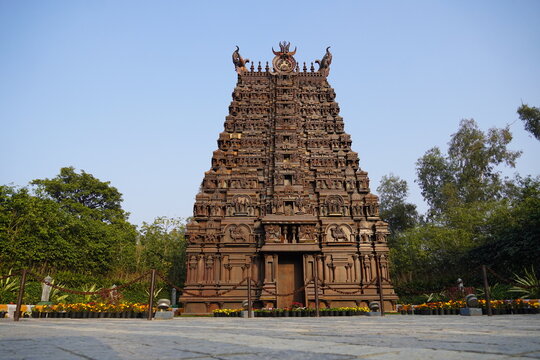
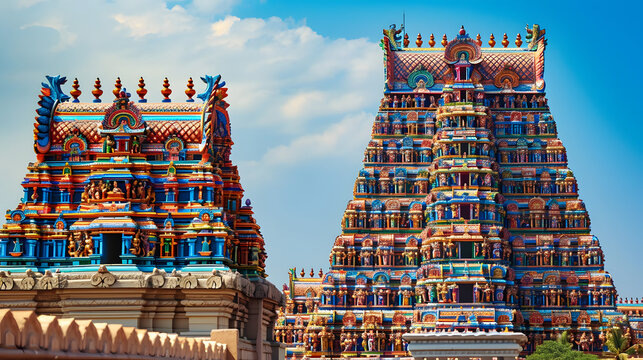
South India’s Famous Temples are a treasure trove of ancient Dravidian architecture, vibrant rituals, and a spiritual ambiance that is both powerful and serene. From the towering gopurams of these famous temples to the tranquil temple tanks and resonant chants, they offer a unique journey into Hindu tradition. Pilgrims and travelers flock to these sacred sites to witness living traditions that have continued unbroken for millennia, experiencing a divine connection amidst intricate stone corridors and grand halls.
Wiki Link: South India’s Famous Temples
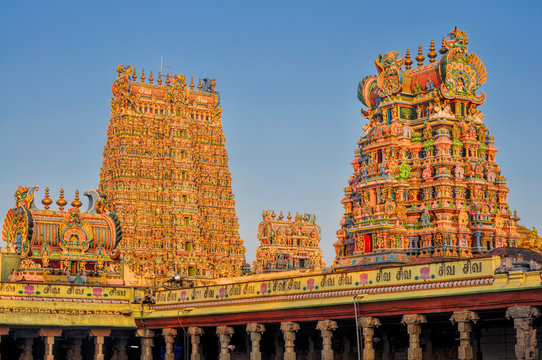
Meenakshi Amman Temple
The Abode of the Fish-Eyed Goddess
Era: Initially built by 6th Century CE; Major expansion in the 16th-17th centuries
Patron: Primarily King Thirumalai Nayakkar
Location: Madurai, Tamil Nadu
UNESCO World Heritage Site: No
A spectacular city-temple dedicated to Goddess Meenakshi (an incarnation of Parvati) and her consort, Lord Sundareshwarar (Shiva).
- Famous for its 14 colossal, colorfully painted gopurams, which are covered in thousands of stucco figures of gods, goddesses, and mythical creatures.
- The temple complex is a vibrant, bustling universe of its own, with the sacred Potramarai Kulam (Golden Lotus Tank) at its heart.
- The nightly ceremony of putting the deities to sleep is a deeply moving experience.
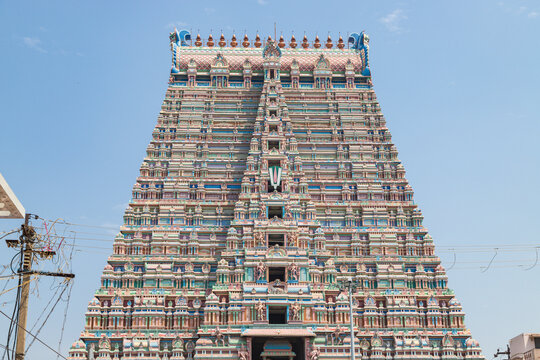
Sri Ranganathaswamy Temple
The Grand Abode of Lord Vishnu
Era: Construction spanned from 10th to 17th centuries
Patron: Various dynasties including the Cholas, Pandyas, Hoysalas, and Vijayanagara rulers
Location: Srirangam, Tiruchirappalli, Tamil Nadu
UNESCO World Heritage Site: No
One of the largest temple complexes in the world and the first among the 108 Divya Desams (holy abodes of Vishnu).
- Dedicated to Lord Ranganatha, a reclining form of Vishnu, the temple is renowned for its 7 concentric enclosure walls and 21 magnificent gopurams.
- The main tower, the Rajagopuram, is one of the tallest in Asia.
- The temple is an active center of Vaishnavite tradition and its sheer scale is a testament to centuries of architectural evolution and devotion.
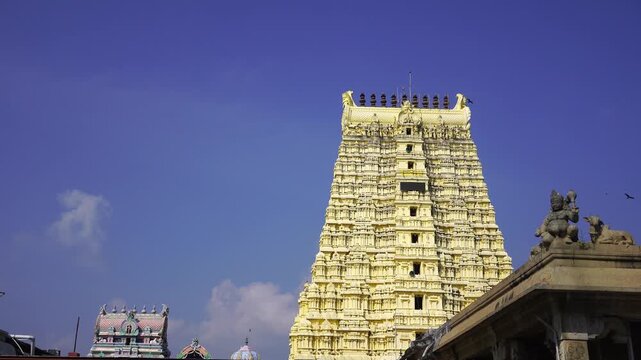
Ramanathaswamy Temple
Where Lord Shiva Absolved Rama's Sin
Era: 12th Century onwards
Patron: Various dynasties, including the Sethupathi rulers
Location: Rameswaram, Tamil Nadu
UNESCO World Heritage Site: No
One of the twelve Jyotirlingas, this temple is sacred to Lord Shiva. It is believed to have been established by Lord Rama to atone for the sin of killing the demon king Ravana.
- The temple is famed for its longest temple corridor in the world, with intricately carved pillars.
- The 22 sacred wells (theerthams) within the complex are believed to have water with different medicinal and purifying properties.
- A pilgrimage to Varanasi is considered incomplete without a visit to Rameswaram.
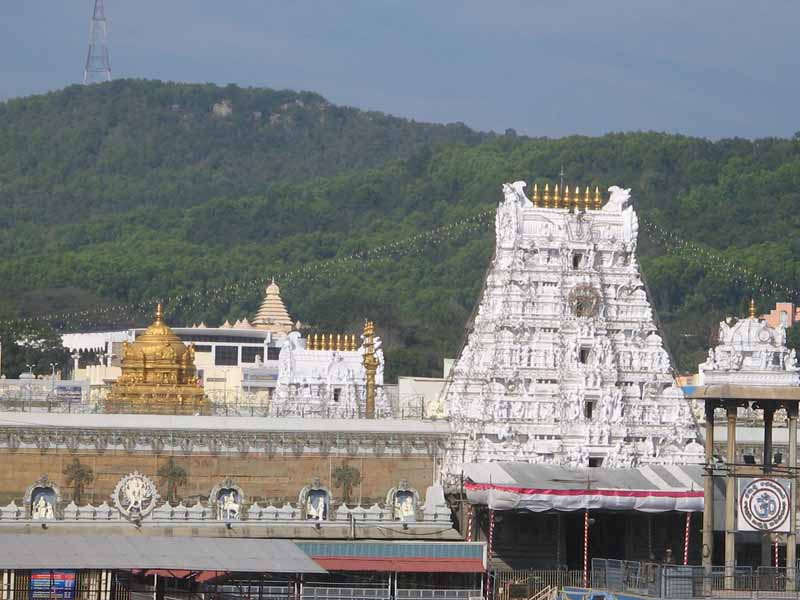
Tirumala Venkateswara Temple
The Lord of the Seven Hills
Era: Records from 300 CE; constructions over millennia
Patron: Various kings, including the Pallavas, Cholas, and Vijayanagara emperors
Location: Tirumala (Tirupati), Andhra Pradesh
UNESCO World Heritage Site: No
One of the world’s richest and most-visited religious sites, this temple is dedicated to Lord Venkateswara, a form of Vishnu. Perched on the Tirumala hills, it attracts millions of devotees who undergo long waits for a glimpse (darshan) of the powerful deity. The temple is famous for its laddu prasadam and the practice of tonsuring (mundan) as an offering. The spiritual energy and the sheer scale of devotion here are unparalleled.
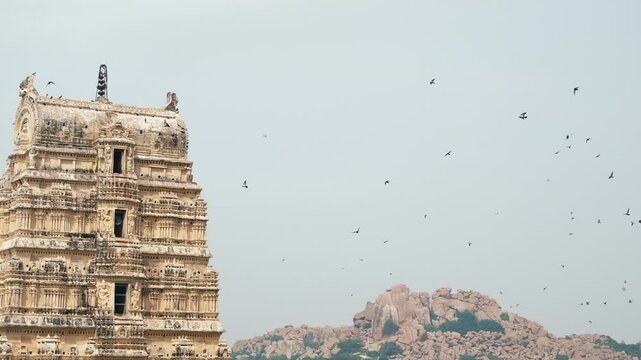
Virupaksha Temple
The Enduring Legacy of the Vijayanagara Empire
Era: 7th Century with major additions in the 14th Century
Patron: Lakkana Dandesha, a chieftain under King Deva Raya II of the Vijayanagara Empire
Location: Hampi, Karnataka
UNESCO World Heritage Site: Yes, as part of the ‘Group of Monuments at Hampi’ (1986)
Located in the ruins of the magnificent city of Hampi, the Virupaksha Temple is dedicated to Lord Shiva and is one of the oldest functioning temples in India. The temple’s grand gopuram, rising to 160 feet, dominates the Hampi landscape. As part of the Hampi UNESCO site, it is a protected monument of outstanding universal value, representing the zenith of Vijayanagara architecture and art.
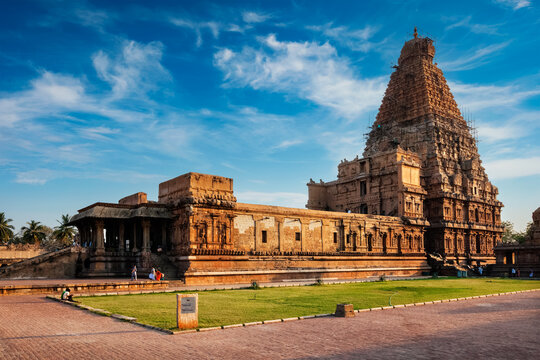
Brihadeeswarar Temple (Thanjavur)
The Great Living Chola Temple
Era: Completed in 1010 CE
Patron: King Rajaraja Chola I
Location: Thanjavur, Tamil Nadu
UNESCO World Heritage Site: Yes, as part of the ‘Great Living Chola Temples’ (1987, 2004)
A UNESCO World Heritage Site and a masterpiece of Chola architecture. Also known as the Big Temple, it is dedicated to Lord Shiva. Its towering vimana (main temple tower) stands at 216 feet and is built entirely from granite, with a single, massive 80-tonne capstone. It is a stunning example of Dravidian architecture’s precision, grandeur, and engineering genius, recognized by UNESCO for its cultural and architectural significance.
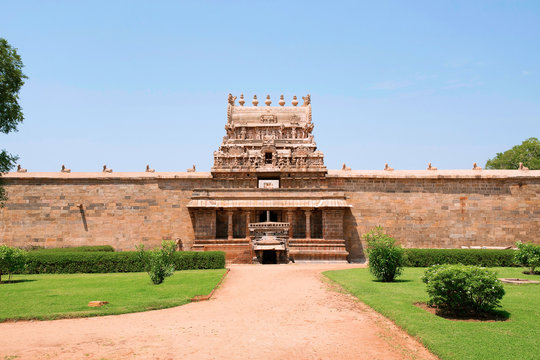
Airavatesvara Temple (Darasuram)
The Chariot of the Gods
Era: 12th Century CE (Completed in 1166 CE)
Patron: King Rajaraja Chola II
Location: Darasuram, near Kumbakonam, Tamil Nadu
UNESCO World Heritage Site: Yes, as part of the ‘Great Living Chola Temples’ (2004)
This temple is part of the UNESCO Great Living Chola Temples group. Dedicated to Lord Shiva, it is designed like a massive stone chariot. Renowned for its exquisite and intricate stone carvings that depict scenes from Hindu scriptures, daily life, and spiritual symbolism. The quality of the sculptural art here is considered the high-water mark of Chola craftsmanship.
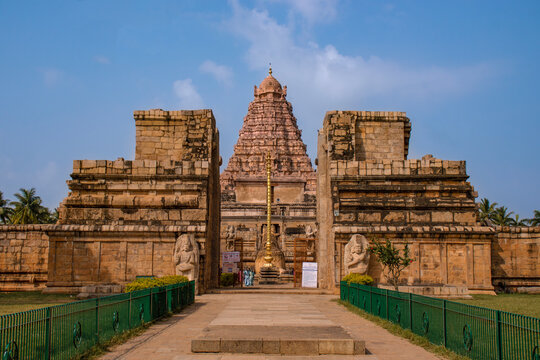
Gangaikonda Cholapuram Temple
The Commemorative Masterpiece
Era: 11th Century CE (Completed in 1035 CE)
Patron: King Rajendra Chola I
Location: Gangaikonda Cholapuram, Tamil Nadu
UNESCO World Heritage Site: Yes, as part of the ‘Great Living Chola Temples’ (2004)
The third temple in the UNESCO Great Living Chola Temples group, built to commemorate Rajendra Chola’s victory and expansion to the Ganges. The temple’s vimana is slightly smaller than the Brihadeeswarar Temple but is acclaimed for its elegant proportions and graceful sculptures. It represents a distinct development in Chola architecture and stands as a testament to the empire’s power and artistic vision.
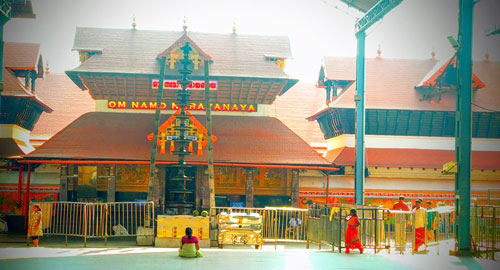
Guruvayur Sri Krishna Temple
The Dwarka of the South
Era: 16th Century (The idol is believed to be ancient)
Patron: Devotees and various regional rulers
Location: Guruvayur, Kerala
UNESCO World Heritage Site: No
One of the most important and revered Krishna temples in the world. The main deity is Lord Guruvayurappan, a four-armed form of Vishnu holding the conch, discus, mace, and a lotus. The temple is known for its strict dress code and traditional rituals performed with great fervor. The belief in the deity’s power to bless childless couples with progeny draws thousands of devotees.
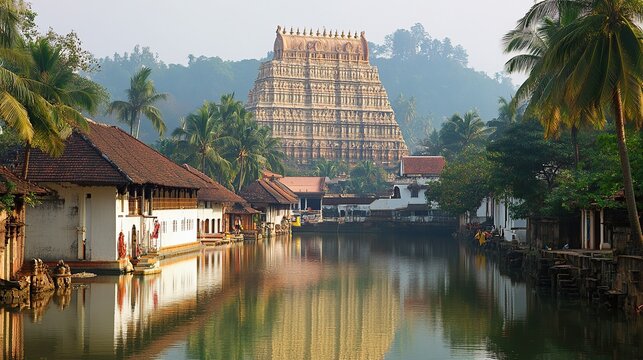
Padmanabhaswamy Temple
The Abode of the Anantha Sayanam Lord
Era: 8th Century CE (main structure from 18th Century)
Patron: The Travancore Royal Family, especially Marthanda Varma
Location: Thiruvananthapuram, Kerala
UNESCO World Heritage Site: No
Famous for its magnificent Kerala-style architecture and the recent discovery of vast treasures in its secret vaults. The principal deity is Lord Padmanabhaswamy (Vishnu) in a rare, majestic reclining posture on the serpent Anantha. The 18-foot-long idol can be viewed through three separate doors. The temple is intricately linked with the history of the Travancore royal family.
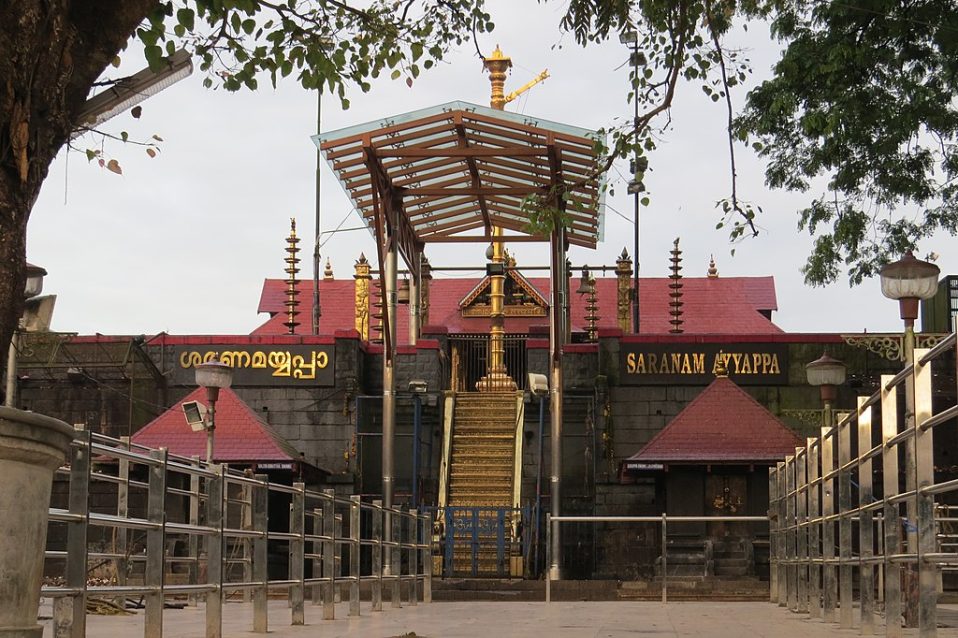
Sabarimala Sree Ayyappa Temple
The Celestial Abode of the Dharma Sastha
Era: Ancient; believed to be built by Lord Parasurama
Patron: Devotees
Location: Pathanamthitta District, Kerala (Periyar Tiger Reserve)
UNESCO World Heritage Site: No
A unique temple dedicated to Lord Ayyappa, a celibate deity. Situated amidst dense forests and hills, it is one of the largest annual pilgrimages in the world. Devotees, known as Ayyappans, observe 41 days of strict penance before undertaking the arduous trek to the temple. The temple is open only during specific periods, with the Makaravilakku season in January being the most prominent.
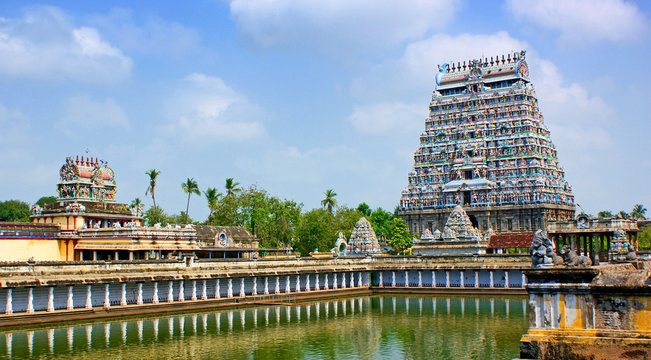
Chidambaram Nataraja Temple
The Cosmic Dance Hall of Shiva
Era: Primarily built by the Cholas between the 10th and 13th centuries
Patron: Chola Dynasty
Location: Chidambaram, Tamil Nadu
UNESCO World Heritage Site: No
One of the Pancha Bhoota Stalams, representing the element of Sky (Akasha). This temple is unique as it is dedicated to Lord Shiva in his form as Nataraja, the cosmic dancer. The golden-roofed sanctum sanctorum houses the famous Chidambara Rahasyam (The Secret of Chidambaram). The temple’s architecture is based on the human body, and its five grand halls represent the five senses. It is a supreme center for Shaiva philosophy and Bharatnatyam dance.
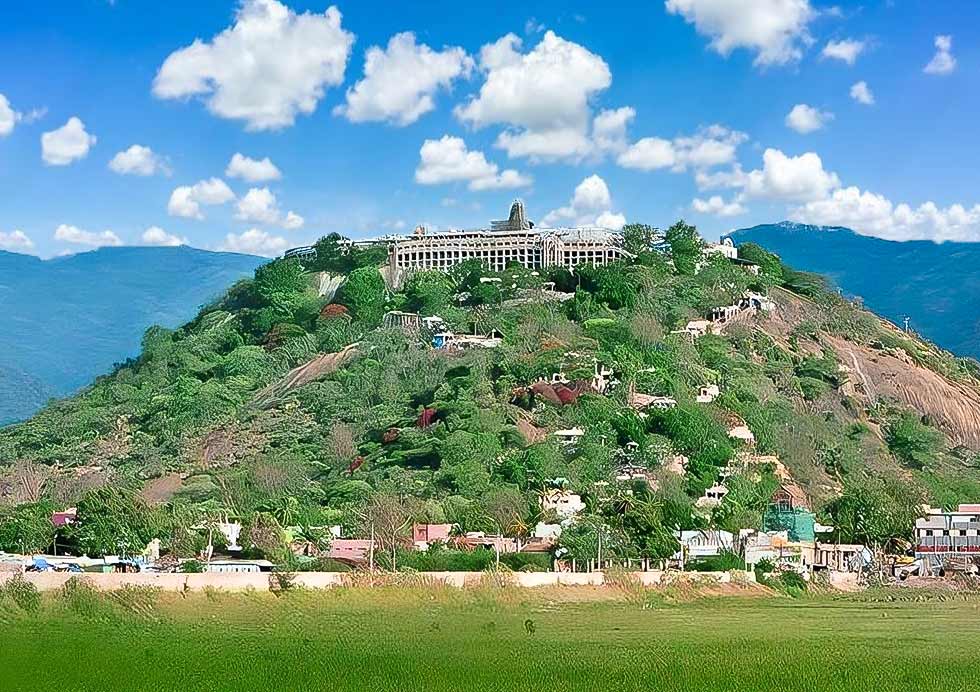
Palani Murugan Temple
The Healing Hill of the Warrior God
Era: Believed to be over 2000 years old
Patron: Various Chera, Pandya, and Nayak rulers
Location: Palani, Tamil Nadu
UNESCO World Heritage Site: No
One of the six holy abodes (Arupadaiveedu) of Lord Murugan (Kartikeya). Perched atop the Sivagiri hill, the main deity, Lord Dandayudhapani Swami, is a unique idol made of an amalgamation of nine herbs (Nava Pashanam). Devotees climb the 689 steps as an act of penance. The Panchamritam offered here is believed to have medicinal properties.
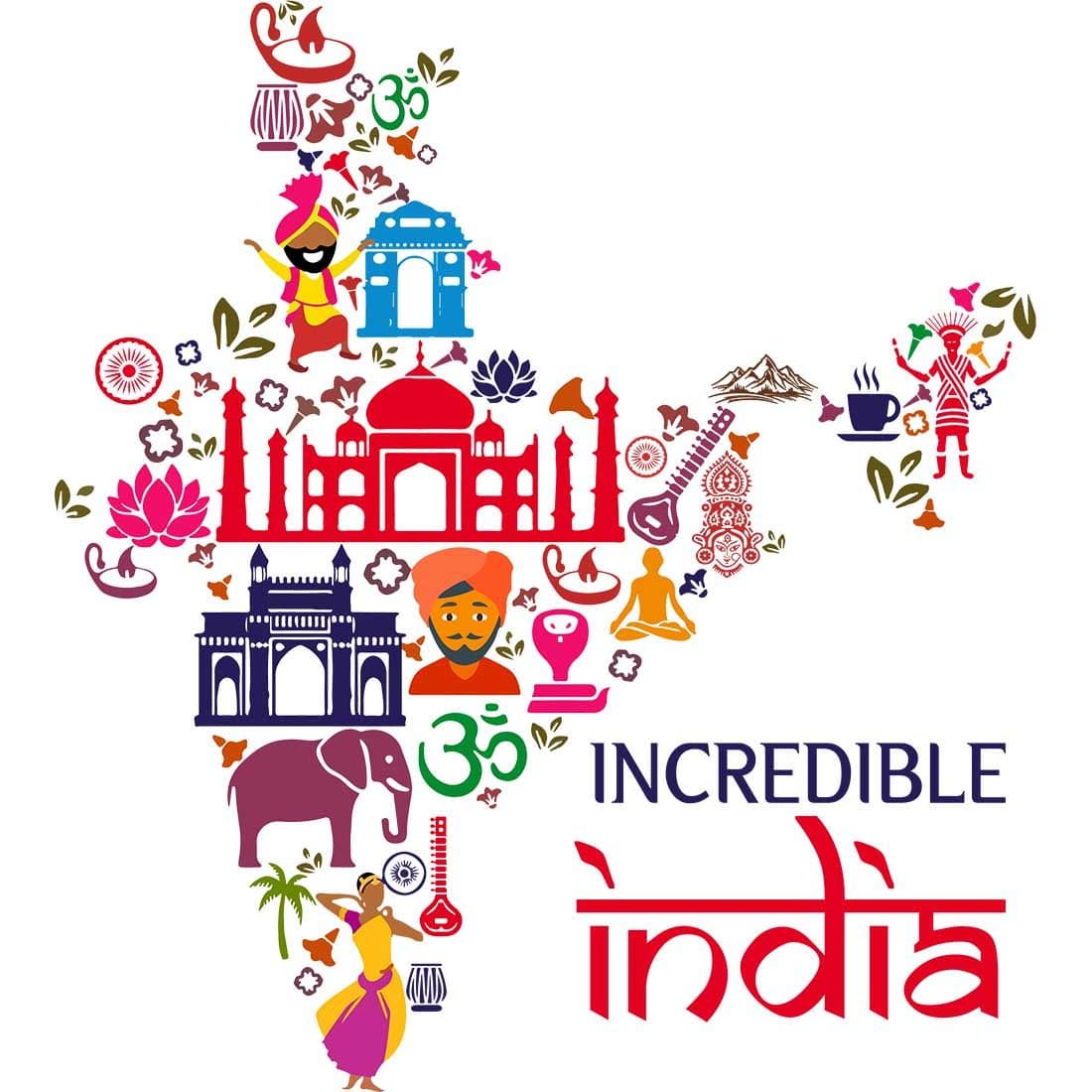
South India Temple Guide Blogs
Temples of South India
Must-Visit Temples in South India
India’s Architectural Marvels
Spiritual Destinations in South India
A Guide to Dravidian Temple Architecture
The Ultimate South India Temple Tour
Sacred Sites of South India
Discovering South India’s Temple Treasures
The Power & Glory of South Indian Temples
